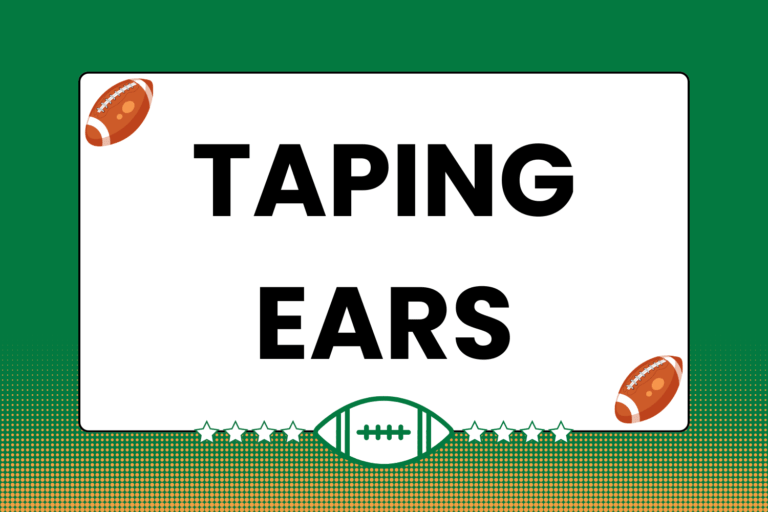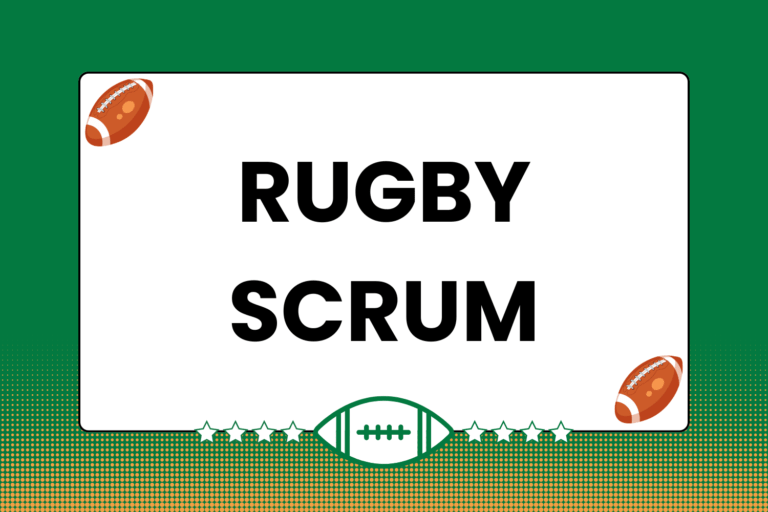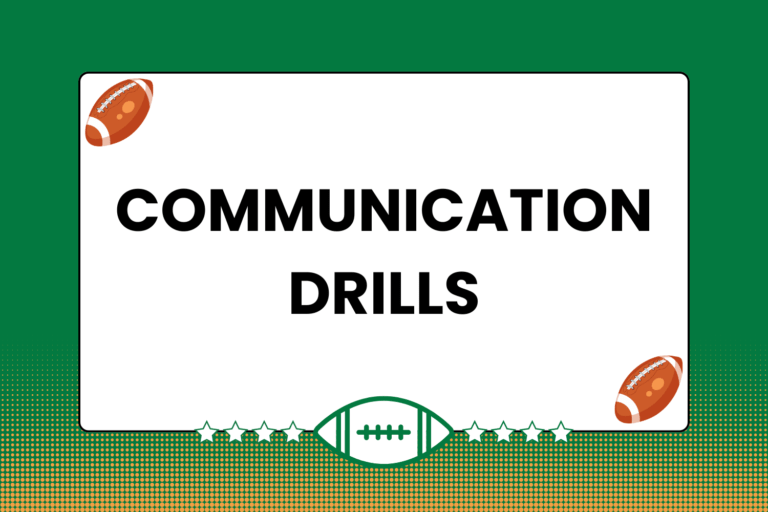Although rugby is a fairly fluid game, occasionally something happens that requires a pause in the action. In such situations, a set piece is used to restart the game; these include kick-offs, scrums, and lineouts. Players need to train for set pieces with as much enthusiasm and attention to detail as they would for a tackling drill. This guide explains the lineout procedure from a training perspective, and highlights some key teaching points.
Lineout Components
The lineout can be separated into two distinct actions — the lift and the throw-in (or just throw). These actions should happen in a very quick sequence, outlined below:
- The lift happens when two lifters assist a jumper in quickly jumping high, holding the player there for a moment, and then quickly bringing the jumper back to the ground.
- The throw happens when the thrower throws the ball into the tunnel between the two groups of players.
In order to successfully train for a lineout, it’s essential that you help your players consistently perform both actions in a very small window of time. But before you have them immediately start training in a full-blown lineout scenario, it’s a good idea to first have players train on both parts of the lineout individually.
Teaching the Techniques
Once you have your forwards separated into lifters, jumpers, and throwers, the next step is to put them through the paces of their respective lineout responsibilities. Lifters and jumpers should work together, while throwers should work on throwing technique and accuracy.
The Jump & Lift
Start by having your lifters and jumpers work in groups of three—two lifters paired with one jumper. They will all work together in one group eventually, but only after they can demonstrate a functional lift and jump in this setting.
Timing is absolutely crucial in the jump and lift, much like the overall lineout procedure. Here’s a step-by-step breakdown for the jump and lift:
Step 1: Get into Position
The jumper should stand facing the thrower (or spot where the thrower would be). One lifter stands between the jumper and thrower, while the other faces the jumper’s back. The jumper should stand mostly upright, while the lifters should bend at the knees like they’re halfway into a squat lift.
Step 2: Secure the Grip
Once the lifters are in position, have them grab on to the jumper. They must take hold of the jumper between the waistline of his shorts and the mid-thigh area. For a better grip, try having both lifters grab either the waistband or hemline of the jumper’s shorts.
Step 3: Make the Jump
For training purposes, it’s a good idea to break the lineout procedure down into sequential parts. Tell the lineout players that you will count “one, two, three, four�? out loud. Each number represents a different part of the jump and lift maneuver:
- On “one,” the jumper should get ready.
- On “two,” the jumper should bend at the knees and crouch down in preparation for a big vertical jump.
- On “three,” the jumper should launch straight up. The arms should be raised in front of the head, ready to catch the ball from the thrower.
- After a moment, call out “four.” The ball should be caught by this point, and the jumper should be descending back to the ground while turning to face his teammates. This last step is mostly for the lifters.
The lifters follow a similar four-step procedure for making the lift. Stress to the lifters that they should hold on to the jumper all the way through the jump, letting go only when the jumper gets back to the ground.
- On “one,” the lifters secure their grips and get ready.
- On “two,” the lifters should crouch down as the jumper does.
- On “three,” the lifters should stay in the crouched position and take a step towards the jumper. They should stay in the crouched position, with their arms locked straight. As the jumper jumps, they very quickly raise their arms up with the jumper and stand up straight.
- At this point, the jumper should be at the highest point of the jump. Both lifters should be standing completely upright, with their arms locked out.
- After a moment, call “four.” The lifters should bend a bit at the knees and unlock their elbows, bringing the jumper back to the ground in a controlled manner. When the jumper is safely back on the ground, they should release their grips.
The lifters generate most of the power for the lift from their legs, not their arms. Because they use their legs for power, it’s important that they keep both arms locked, and move into a position under the jumper as the jump is made. They essentially catch the jumper mid-jump, and help him continue upward.
The Throw

Here’s an overview of a basic throw-in technique:
- Start by holding the ball in both hands, with the hands along the width of the ball rather than the length. One hand (non-dominant) grips the middle of the ball, while the other (dominant) grips it near the point closest to the thrower.
- Raise both arms overhead, bending them slightly at the elbow. The front point of the ball should be aimed at the other forwards in the lineout.
- To start the throw, bend backwards slightly at the waist and then rock forward. The arms follow this motion, so the entire upper body moves in unison.
- As the upper body comes forward, release the ball just after the torso moves forward from a completely vertical position. As soon as you go from standing straight upright to bent slightly forward at the waist, the ball should be released.
- As the ball is released, the non-dominant hand pushes the ball forward. At the exact same time, the dominant hand slides down the ball, causing it to spin.
One of the most common penalties called during a lineout is for a throw-in that’s not straight. Instinctively, the thrower wants to put the ball closer to his team than the opposition, but the throw must still be straight or a penalty will be called.
By generating momentum for the throw from the upper body bend (rather than just using the arms), it’s easier for the thrower to make quick and accurate throws.
Putting it Together
Again, the key to a good lineout is timing — specifically, the timing of the jump and throw. The laws of the game dictate that the thrower must release the ball before any player can leave the ground to catch it. That means the window of opportunity to catch the throw-in is quite small, usually lasting for around one second.





